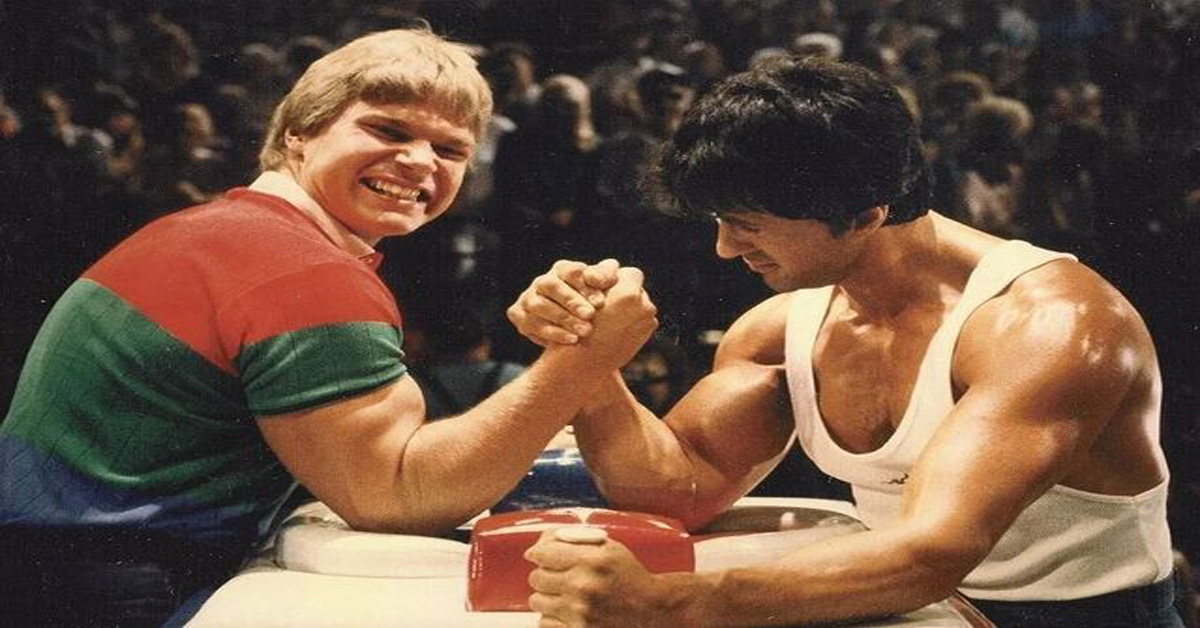
John Brzenk is considered by many as the greatest arm wrestler of all time. He is admired and respected by both fans and fellow arm wrestlers alike for his contributions to arm wrestling.
Here is a highlight of the career of the greatest arm wrestler of all time in John Brzenk. Detailing John’s 40+ year career, 26 championships, and how he helped arm wrestling become a legitimate sport.
John Brzenk’s Early Life
John Brzenk was born in McHenry, Illinois and grew up around arm wrestling. His father, John Brzenk Sr. was also a state champion arm wrestler, who was known for his powerful forearms.
Just like his father, John Jr. would also get into bodybuilding just like his father. He wanted to be just like dad and started arm wrestling his classmates in school. Quickly becoming the best arm wrestler in his class.
When he was in eighth grade, John would suffer a broken arm from an arm wrestling match with his dad’s friend. Brzenk would credit the break, along with his good genetics for strengthening his tendons significantly.
John Brzenk’s Entry Into Professional Arm Wrestling
When John turned eighteen, he would take the leap and become a professional arm wrestler. From the moment Brzenk made his pro debut in 1982, he took over the sport of arm wrestling.
In his first year as a pro, John would win his first world title on the ABC Wide World of Sports program. Not only becoming the youngest star of the sport, but also the best arm wrestler in the world.
Little did fans of arm wrestling realize that John’s reign as champion would last nearly 3 decades. All while never suffering a loss in all of those years.
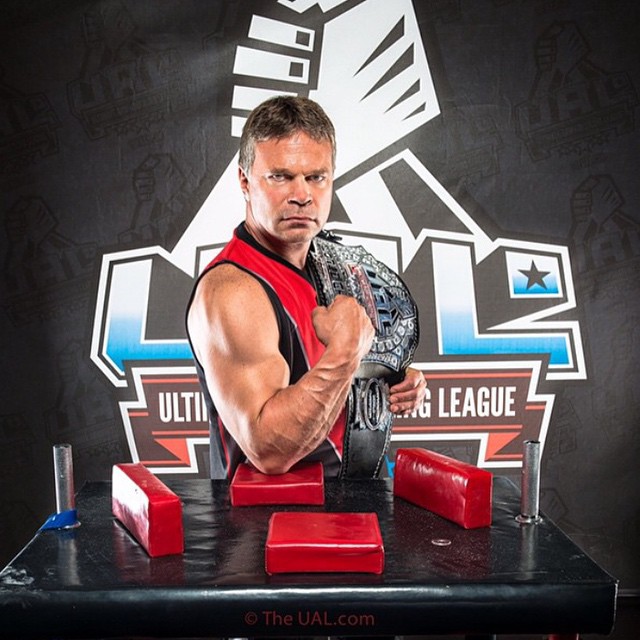
A List of All John Brzenk’s Title Wins
There has never been an arm wrestler with a more long and storied career than John Brzenk. Detailing all of his major titles would take multiple to articles.
Instead, we’ve compiled a list of nearly all of John’s major title wins in the sport of arm wrestling. Here’s a nearly definitive list of John Brzenk’s title wins within multiple weight classes.
AAA Stand Up National
- 1984: 200 lbs(Right-Handed)
- 1985: 185 lbs(Right-Handed)
- 1986: 220 lbs(Right-Handed)
- 1990: 220 lbs(Right-Handed)
Arnold Classic
- 2006: 199+lbs(Right-Handed)
- 2007: 199+lbs(Right-Handed)
AWI World
- 1986: Pro Super Heavyweight
- 1987: Pro Light Heavyweight
- 1988: Pro Light Heavyweight
- 1995: Pro Light Heavyweight
- 2001: Pro Super Heavyweight
Carling O’Keefe International
- 1989: 200 lbs & 230 lbs(Both Right-Handed)
Forsa Tropical International
- 1998: 198 lbs(Right & Left-Handed)/243 lbs(Right-Handed)
GNC Pro Performance
- 2002: 198 lbs(Right-Handed)
Golden Bear
- 1990: 198 lbs(Right & Left-Handed)
- 1994: 198 lbs(Right-Handed)
- 1994: Supermatch Champion
- 1994: Absolute Champion(Right-Handed)
- 1998: 198 lbs(Right-Handed)
Harley Pull
- 2000: 220 lbs(Right-Handed)
- 2001: 220 lbs(Right-Handed)
- 2002: 198 lbs(Left & Right-Handed)
- 2009: 225 LBs(Left & Right-Handed)
Main Event
- 1998: 220 lbs(Right-Handed)
Mike Gould Classic
- 2006: 220 lbs(Left & Right-Handed
- 2010: 220 lbs(Right-Handed)
Mohegan Sun Pac World
- 2005: 198 lbs(Left & Right-Handed)
- 2006: 242 lbs(Right-Handed 243+ lbs(Right-Handed)
- 2007: 198 lbs(Left & Right-Handed)
Over The Top
- 1986: Winner of Truckers Division
Reno Reunion
- 1999: 200 lbs(Right-Handed), 230 lbs(Right-Handed), 231+ lbs(Right-Handed), 200 lbs(Left-Handed)
- 2000: 198 lbs(Right-Handed), 242 lbs(Right-Handed, 243+ lbs(Right-Handed), 198 lbs(Left-Handed), 242 lbs(Left-Handed)
- 2001: 198 lbs(Right-Handed), 242 lbs(Right-Handed), 243+ lbs(Right-Handed), 198 lbs(Left-Handed)
- 2002: 198 lbs(Right-Handed, 242 lbs(Right-Handed), 243+ lbs(Right-Handed, 198 lbs(Left-Handed), 242 lbs(Left-Handed)
- 2003: 233+ lbs(Right-Handed)
- 2006: 242 lbs(Right-Handed), 243+ lbs(Right-Handed)
- 2006: 242 lbs(Right-Handed), 243+ lbs(Right-Handed)
ROTN
- 2007: 215 lbs(Left & Right-Handed)
- 2008: 242 lbs(Left & Right-Handed)
- 2009: 199+ lbs(Right-Handed)
Sands International Wrist Wrestling/Armwrestling
- 1988: 190 lbs(Right-Handed)
- 1989: 190 lbs(Right-Handed), 215 lbs(Right-Handed)
Sherkston Beaches International
- 1987: 200 lbs & 201+ lbs(Right-Handed)
SuperStar Showdown
- 2004: 199+ lbs(Right-Handed)
- 2005: 198 lbs(Right-Handed)
Ultimate Armwrestling(Las Vegas)
- 2004: 242 lbs(Right-Handed)
- 2005: 198 lbs(Left & Right-Handed)
- 2006: 242 lbs(Right-Handed), 243+ lbs(Right-Handed)
Ultimate Armwrestling League
- 2011: 200 lbs(Right-Handed)
USAA National Pro-Am
- 1996: 200 lbs(Right-Handed), 201+ lbs(Right-Handed)
- 1997: 198 lbs(Right-Handed), 242 lbs(Right-Handed), 243+ lbs(Right-Handed), 198 lbs(Left-Handed)
- 1998: 242 lbs(Right-Handed), 243+ lbs(Right-Handed)
- 1999: 198 lbs(Right-Handed), 242 lbs(Right-Handed), 243+ lbs(Right-Handed), 198 lbs(Left-Handed), 242 lbs(Left-Handed)
- 2000: 242 lbs(Right-Handed), 243+ lbs(Right-Handed), 242 lbs(Left-Handed), 243+ lbs(Left-Handed)
- 2001: 242 lbs(Right-Handed), 243+ lbs(Right-Handed), 242 lbs(Left-Handed), 243+ lbs(Left-Handed)
- 2002: 198 lbs(Right-Handed), 242 lbs(Right-Handed), 243+ lbs(Right-Handed), 198 lbs(Left-Handed), 242 lbs(Left-Handed)
- 2003: 242 lbs(Right-Handed), 243+ lbs(Right-Handed)
- 2004: 242 lbs(Right-Handed), 243+ lbs(Right-Handed), 242 lbs(Left-Handed)
- 2005: 242 lbs(Right-Handed)
- 2006: 242 lbs(Right-Handed), 243+ lbs(Right-Handed)
- 2007: 242 lbs(Right-Handed), 243+ lbs(Right-Handed)
- 2009: 242 lbs(Right-Handed), 243+ lbs(Right-Handed), 242 lbs(Left-Handed), 243+ lbs(Left-Handed)
- 2010: 242 lbs(Right-Handed), 243+ lbs(Right-Handed)
USAF Unified National
- 2005: 220 lbs(Right-Handed)
WAF World Armwrestling Championship
- 1999 Supermatch(Left-Handed)
WAL
2015: Heavyweight Championship(Right-Handed)
World Wristwrestling Championship(Petaluma)
- 1984: Lightweight(Right-Handed)
- 1988: Heavyweight, Middleweight,(Right-Handed)
- 1989: Heavyweight, Middleweight(Right-Handed)
- 1990: Heavyweight, Middleweight(Right-Handed)
- 1991: Heavyweight, Middleweight(Right-Handed)
- 1996: Heavyweight(Right-Handed), Middleweight(Left-Handed)
- 1998: Heavyweight, Light Heavyweight, Middleweight(Left & Right-Handed)
- 2001: Heavyweight, Light Heavyweight, Middleweight(Left & Right-Handed)
WPAA World
- 1985: Middleweight
Yukon Jack National/World
- 1990: Heavyweight(Right-Handed)
- 1991: Heavyweight(Right-Handed)
- 1992: Heavyweight(Right-Handed)
- 1993: Heavyweight(Right-Handed)
- 1995: Middleweight(Right-Handed)
- 1996: Middleweight: Right-Handed)
Zloty Tur/Nemiroff World Cup
- 2004: 220 lbs(Right-Handed)
- 2006: 220 lbs, Open Weight(Right-Handed)
- 2007: 220 lbs, Open Weight(Left & Right-Handed)
- 2008: 220 lbs, Open Weight(Right-Handed)
- 2009: 220 lbs, Open Weight(Left & Right-Handed)
Over The Top
The film Over The Top from 1987 starring Sylvester Stallone was actually inspired by John Brzenk. In the previous year, Brzenk had won the trucker division of the 1986 Over The Top Arm Wrestling Championship.
Winning the division and the grand prize mack truck. Brzenk would also have an uncredited cameo in the film.
John Brzenk’s Technical Approach
If you ask any of the top arm wrestlers, they will credit John Brzenk for being an innovator. He helped what was perceived as a strongman competition and helped evolve it into a legitimate sport.
Of course John is strong, but what helped him become the best ever was his technical approach. He studied arm wrestling extensively and became a technical master.
Most arm wrestlers have one technique they’re good at, but John is good at all aspects. Everything from hooking, hand control, and pushing. Mixing them all together to beat the best athletes in the world.
John Brzenk’s Training
Not only is John an innovator at the technical aspect of arm wrestling, but also the training. Believe it or not, John does not do a weight lifting routine.
Every strength training exercise he does is oriented for the sport of arm wrestling. What he likes to do is use straps and hook them to a heavy pulley system.
Mimicking the moments of a match and engaging all of the muscles he uses for competition. Never wearing down his body, but always being in shape to be the best in the world.
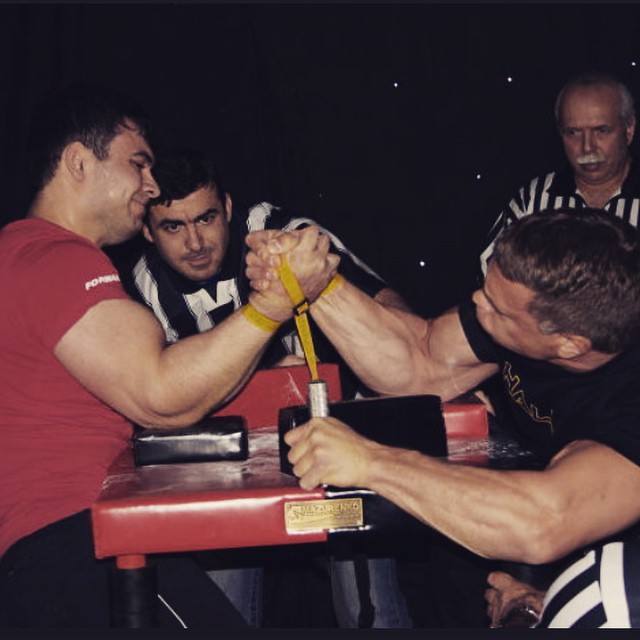
Pulling John
John was the focus of the documentary “Pulling John” that was released in 2009. A camera crew followed Brzenk around for over four years documenting his life and career.
During the filming, John would talk about the sport he loves and ponder about when he would retire.
John Brzenk’s Personal Life
When John was winning world titles in arm wrestling, he worked as an airplane mechanic for Delta Airlines for many years. A job that John says he loved and gave his arms a rest in between tournaments.
John is also a family man, who has been married for over thirty years, has two daughters, and is a grandfather.
The Retirement and Return of John Brzenk
In 2016, John Brzenk would make his first retirement from the sport of arm wrestling at 52 years old. This retirement would last for six years as he would make a comeback.
In his fifties, Brzenk would return to the sport he dominated for decades and still one of the best. He would shut out top ranked athlete Khadzimurat Zoloev and regain the world’s top ranking once again.
Brzenk would continue where he left off in 2022, where he competed at the 4th East vs West. Beating Kydyrgali Ongarbaev in a right-handed super match.
Then later that year, John would also beat Oleg Petrenko 3-0. Showing that Brzenk is still very much one of the best arm wrestlers in the world today at nearly 60.
The Legacy of John Brzenk
John Brzenk is considered the greatest arm wrestler of all time and an innovator of the sport. He’s won the most titles of any arm wrestler in history, but this wasn’t his most important work.
His work ethic and approach to arm wrestling turned it from a strong man competition and into a legitimate sport.
Unbelievably at nearly 60 years old, Brzenk is still one of the world’s best arm wrestlers. No one will be surprised if he wins more titles before calling it a career.
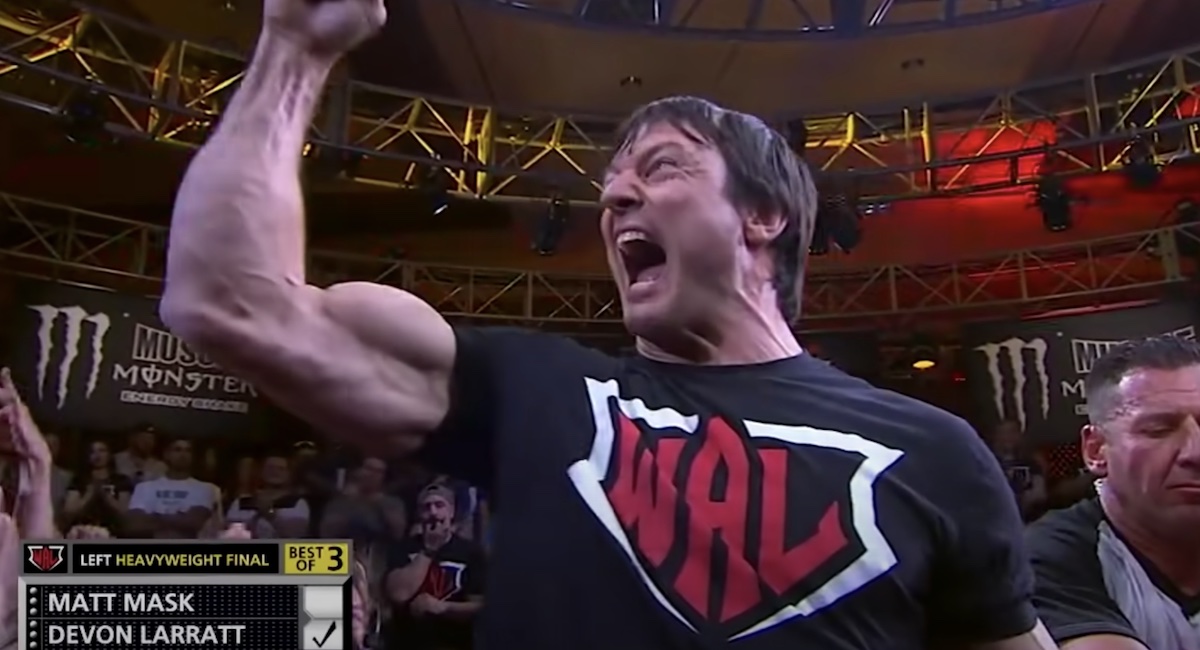 Devon Larratt is one of the best arm wrestlers on the planet. He’s a fan favorite that has been one of the top competitors in the sport for decades. Here’s what you need to know about Devon Larratt. Detailing everything from his start in the sport, becoming a champion, and his training methods. Devon Larratt’s […]
Devon Larratt is one of the best arm wrestlers on the planet. He’s a fan favorite that has been one of the top competitors in the sport for decades. Here’s what you need to know about Devon Larratt. Detailing everything from his start in the sport, becoming a champion, and his training methods. Devon Larratt’s […]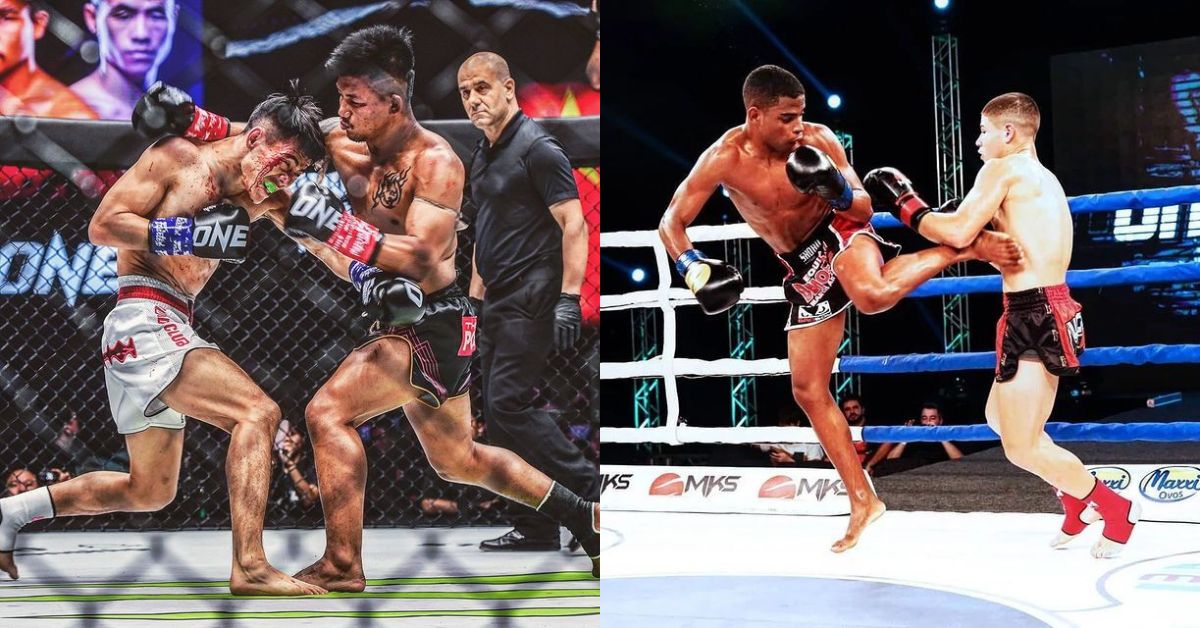 There’s many combat sports fans that think Muay Thai and kickboxing are the same thing, but they could be more different. For years, practitioners from both styles have competed against each other in the other’s style with varying results. Here’s a full breakdown of the old Muay Thai vs Kickboxing scenario. Comparing everything about the […]
There’s many combat sports fans that think Muay Thai and kickboxing are the same thing, but they could be more different. For years, practitioners from both styles have competed against each other in the other’s style with varying results. Here’s a full breakdown of the old Muay Thai vs Kickboxing scenario. Comparing everything about the […]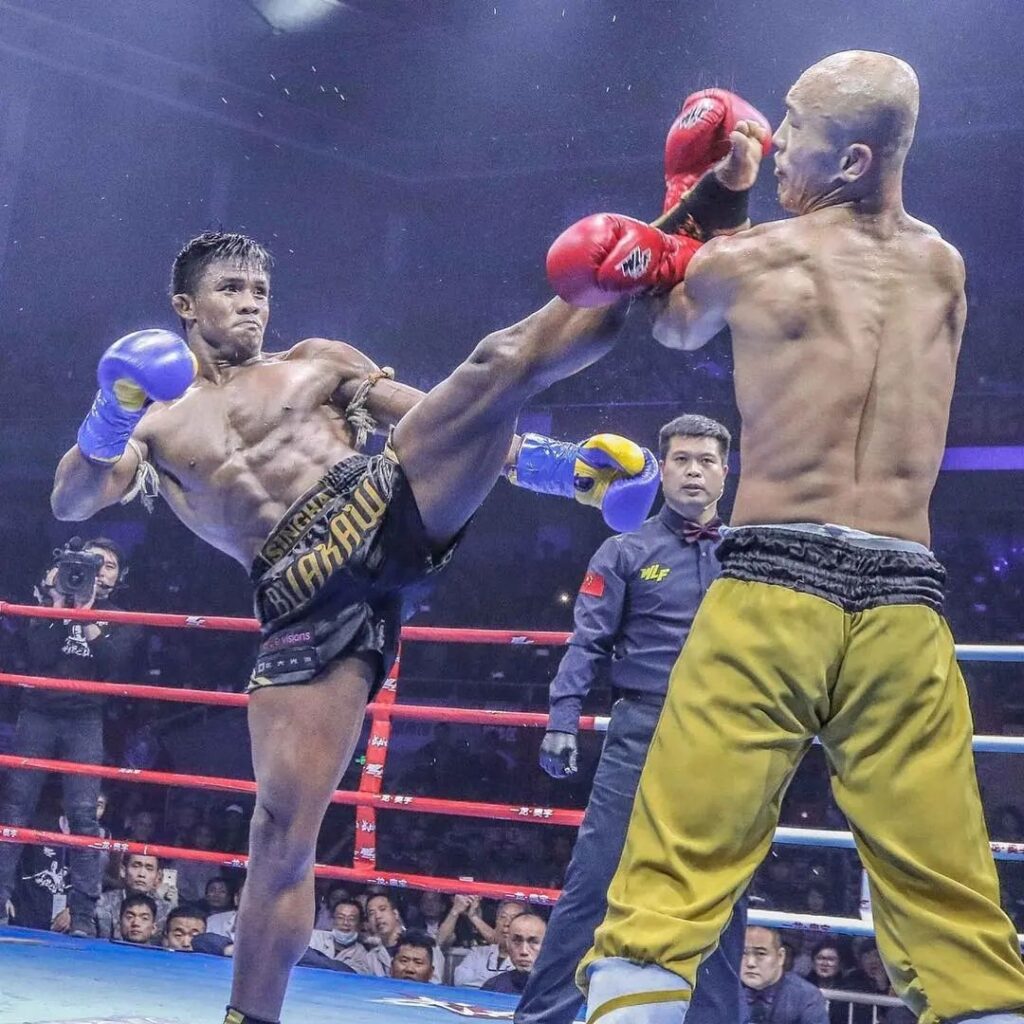
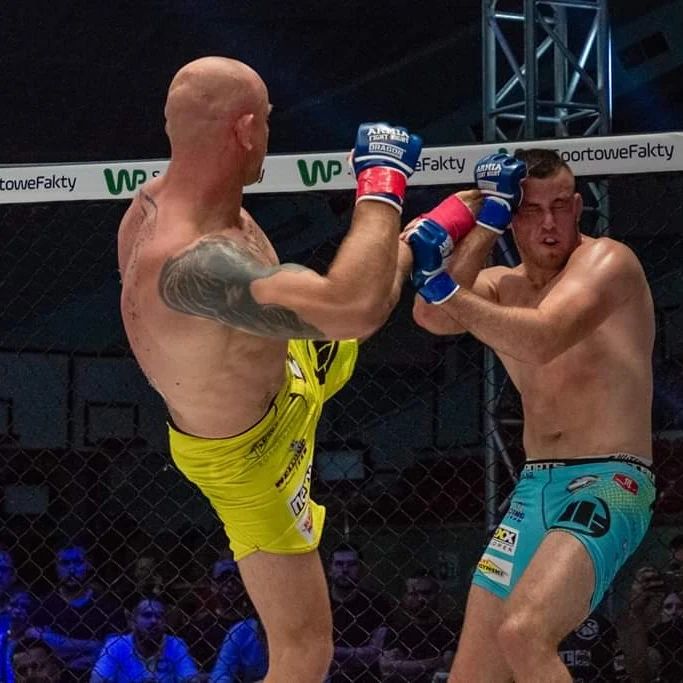
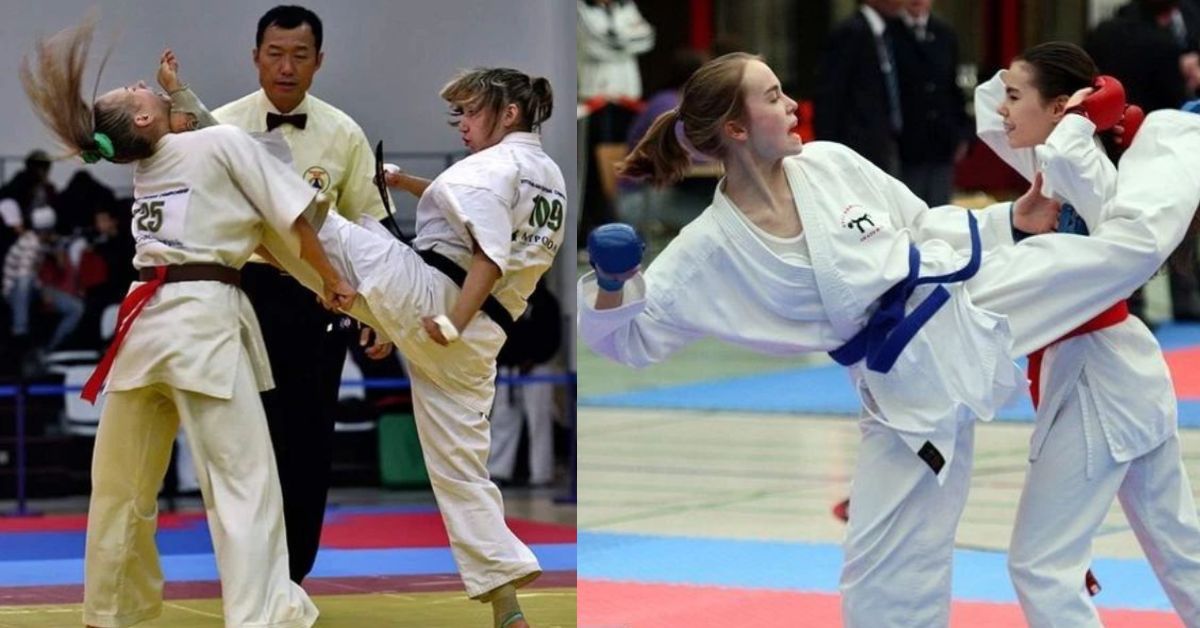 Karate and Taekwondo are two of the most practiced martial arts in the world. At the height of their popularity, there were many debates discussing which was the superior martial art. Let’s break down Karate vs Taekwondo and go over all of the similarities and differences between the two striking arts. Including going over the […]
Karate and Taekwondo are two of the most practiced martial arts in the world. At the height of their popularity, there were many debates discussing which was the superior martial art. Let’s break down Karate vs Taekwondo and go over all of the similarities and differences between the two striking arts. Including going over the […]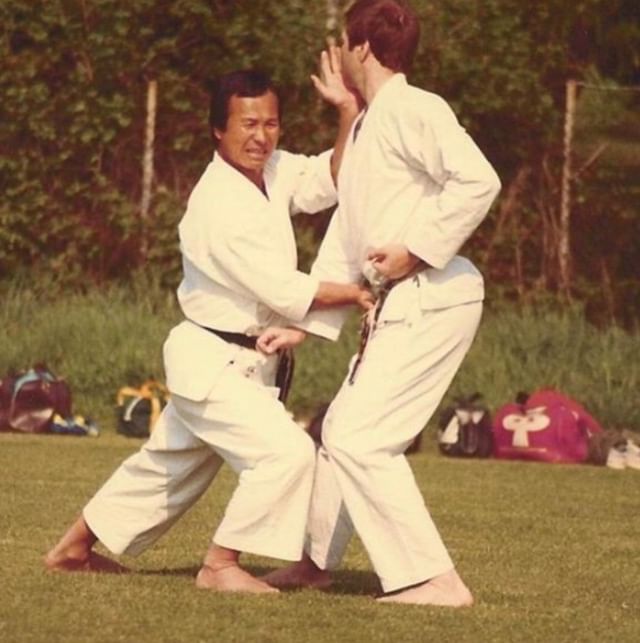
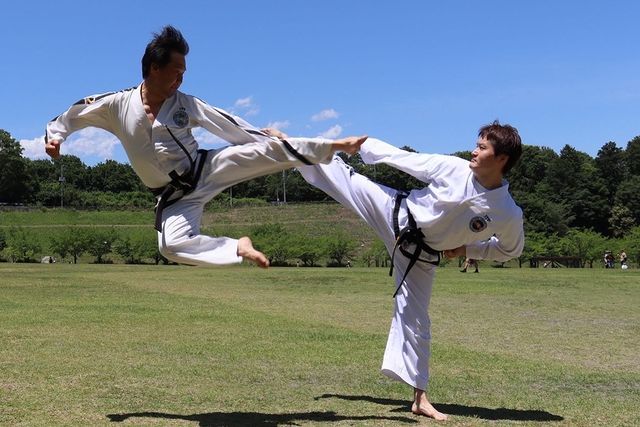
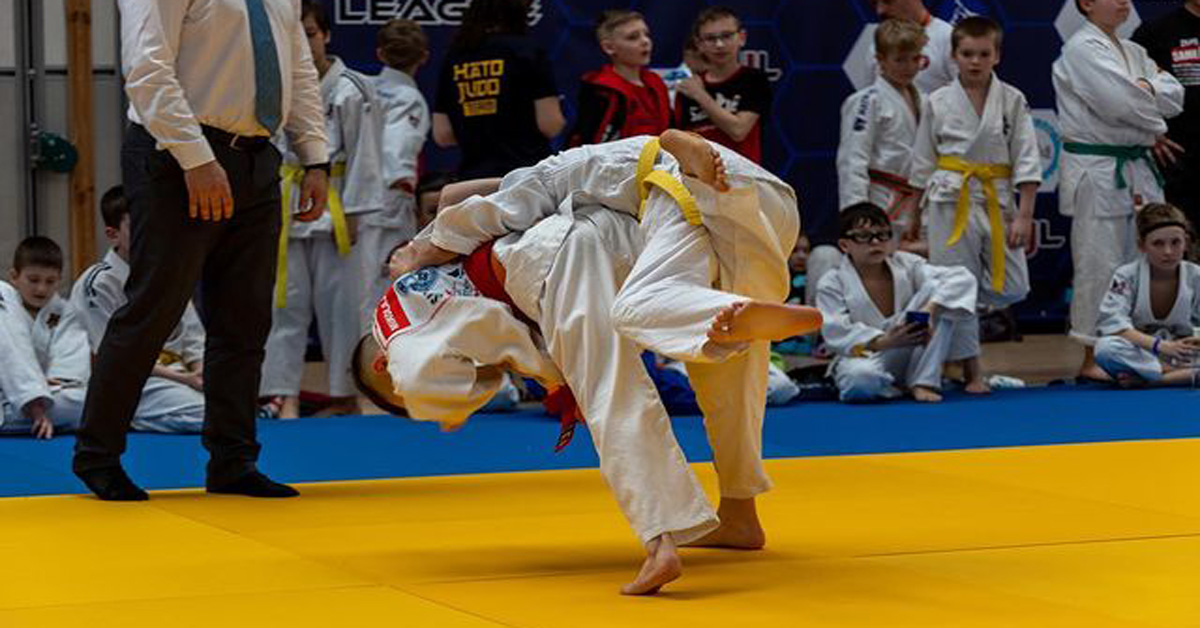 The grappling art of Judo has one quite a diverse library of techniques. One of the most asked questions by those learning about the martial art is how many Judo throws are there? We’ve put together a list of all of the Judo throws for you and detail the 12 most versatile. See all of […]
The grappling art of Judo has one quite a diverse library of techniques. One of the most asked questions by those learning about the martial art is how many Judo throws are there? We’ve put together a list of all of the Judo throws for you and detail the 12 most versatile. See all of […]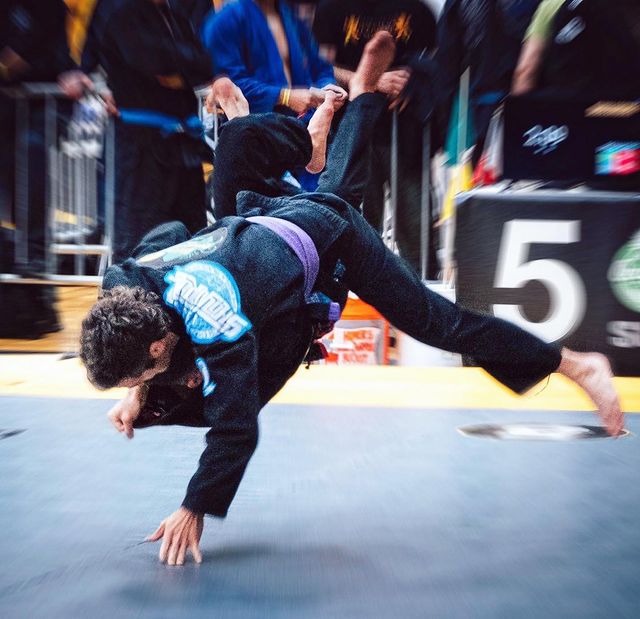
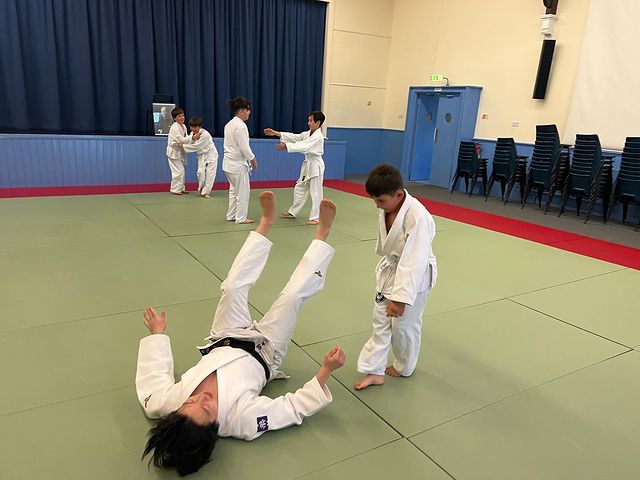
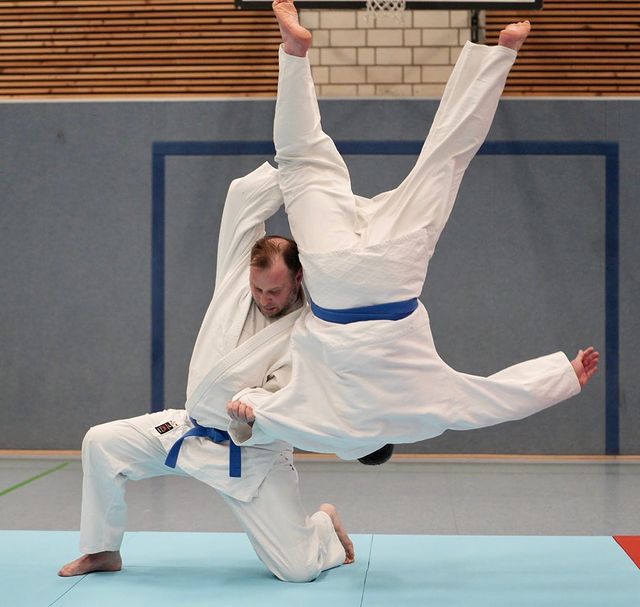
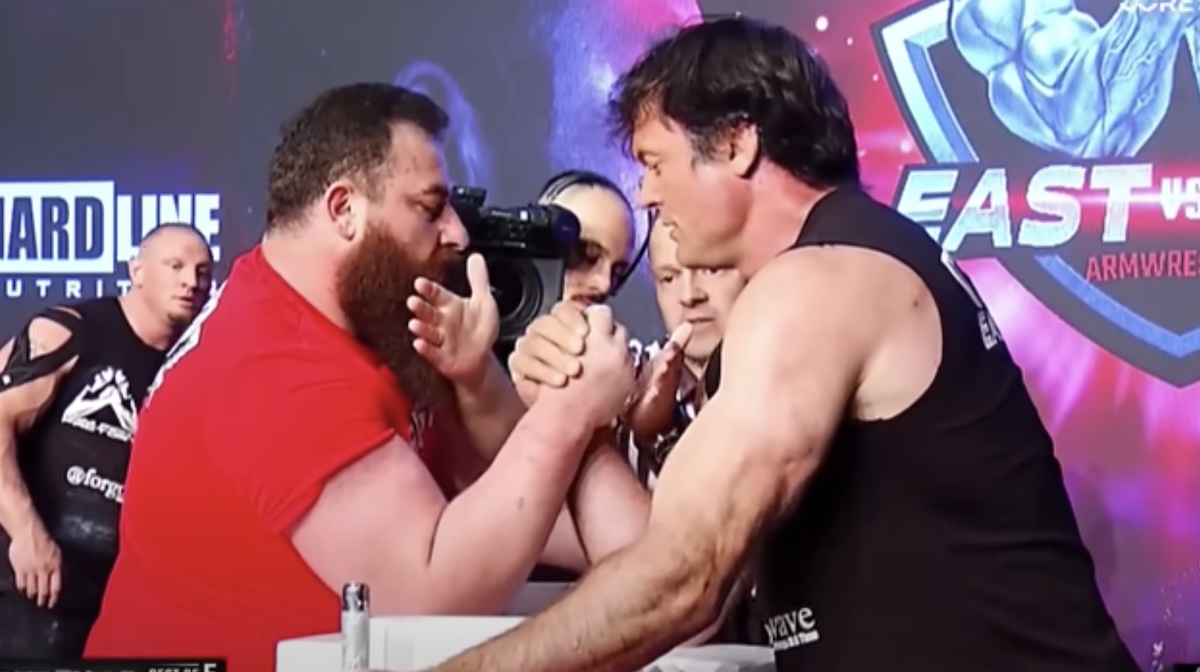 The sport of arm wrestling has had a surge in popularity in recent years. There are more fans getting into the sport and wanting to learn about its history. Here is what you need to know about the history of arm wrestling. Going over the history of the sport, here competitors train for their sport, […]
The sport of arm wrestling has had a surge in popularity in recent years. There are more fans getting into the sport and wanting to learn about its history. Here is what you need to know about the history of arm wrestling. Going over the history of the sport, here competitors train for their sport, […]